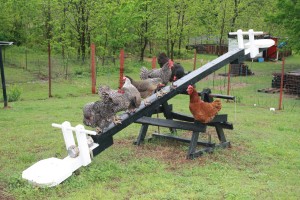When I was 13-years-old my family moved from the land of prairie grass and crape myrtle (Oklahoma) to the land of mimosa trees and kudzu vines (Mississippi). I’ll never forget my first glimpse of kudzu. All along the highway it looked as if the trees and other vegetation had disappeared and been replaced by huge mounds of green vines. We thought it was beautiful. For a bored middle school traveler it was a gift; finding green hidden elephants and Eiffel Towers was much better than looking for cloud shapes in the sky.
My mother–always the botanist–was quick to ask the first Mississippi native we saw about the beautiful vine. What we found out was quite shocking. The Mississippi trees were *under* that vine: dying. This plant was the vegetable form of King Kong or Godzilla. In the 1940’s the United States Department of Agriculture directed 1.2 million acres of Asian kudzu to be planted in America to deter erosion. It was a Big. Mistake. It took over and in 1998 it was estimated that kudzu covered over seven million acres in the Southeastern United States.
That would be the bad news.
Here is the good news (I love good news, don’t you?).
The good news comes in the form of a boy: a teenage boy (the homeschool mom in me *really* loves this!). Jacob Schindler –now 17–came up with the idea of planting kudzu on Mars for his 6th grade science project. Through his experimentation, he found that helium gas kills kudzu. He has since invented a device to disperse helium in to the ground at kudzu root systems. It works. He’s also testing kudzu as an alternative food source (we’re going to *eat* Godzilla?).
My proud-mama feelings go berserk when I read a quote from Jacob, “”Hopefully I’ve developed my future career. If not, I’ve learned a lot of life skills: research, public speaking, making connections. It’s opened a lot of doors for me. Otherwise, I would probably be home this summer, just washing the truck.”
Read more about Jacob Schindler here.

